
If you’re unfamiliar with Larung Gar, it may be because the small, remote town located in a far-flung corner of China has largely stayed out of the tourism spotlight. It is, however, a cultural and historical Tibetan treasure that has been undergoing tremendous changes in the past few decades, particularly in the midst of global controversy between Tibet and China.
Standing as the largest Buddhist settlement in the world, the town in Sichuan is primarily home to monks and nuns studying and living there; the renowned Larung Five Sciences Buddhist Academy is believed to be the largest religious institute in the world. Photographer Marco Grassi recently traveled to this beautiful and sacred destination to provide outsiders a look into this magnificent and seemingly isolated town through his lens.
Grassi is a self-taught landscape and travel photographer who was born and raised in Italy, but he now lives a life filled with the adventures he had imagined as a child. In 2015, he traveled more than 18 hours by bus over bumpy roads to Larung Gar, which he says is “the kind of place where you have to pinch yourself to believe you’re not dreaming.” Grassi shares that despite the strenuous journey he endured, it was mesmerizing to arrive at such a surreal-looking destination.
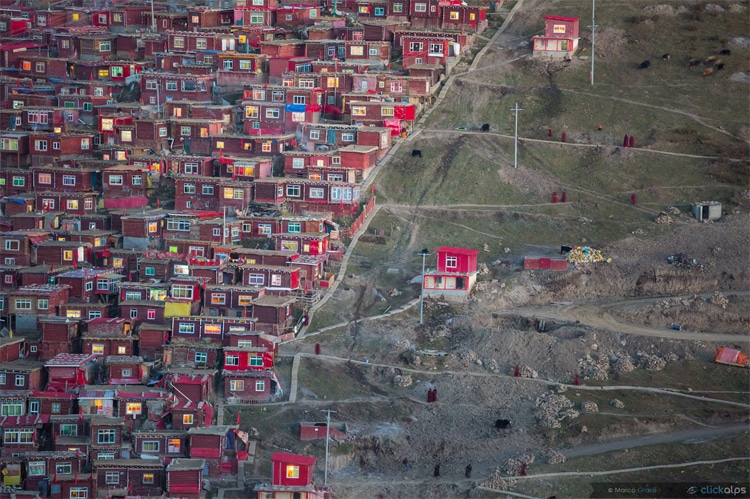
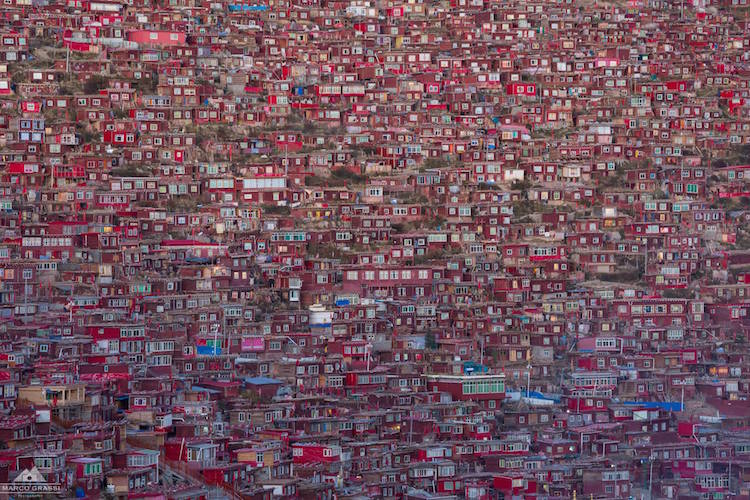
The photographer spent the first night in town sleeping on the roof of a hotel as those were the only accommodations available. However, he explains, “It’s hard not to be inspired by such an incredible and unusual place. I simply couldn’t believe my own eyes by what I’ve witnessed… Walking around the village was like being inside a maze. It was a chaotic and busy place, but it was still very organized, thanks to the routine that this entire community had developed over the years.”
Grassi’s stunning images of Larung Gar were taken during sunrise and sunset from the top of a hill that overlooks the valley. He had to work around chimney smoke and packs of wild dogs running around on the streets to get the shots he wanted. “[The smoke] covered the village under a soft veil and created a low contrast. To overcome these challenges, I often had to change my framing, or even postpone the shooting of that portion of the village and reschedule to another day.”
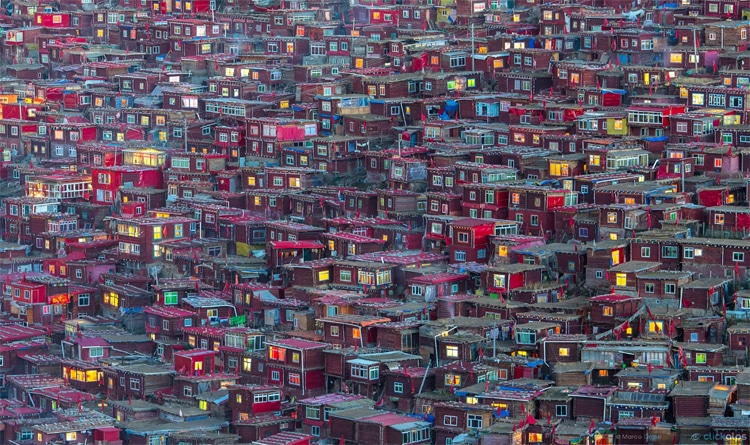
Inspired by his original trip, Grassi began leading photography workshops to Larung Gar and the surrounding Tibetan regions through Travel To Be Alive Expeditions and a partnership with tour specialist China Highlights. Currently, his nine-day exploration through the hidden gems of West Sichaun is placed on hold as entry to Larung Gar was closed off to tourists by Chinese officials in June 2016.
A London-based group, Free Tibet, says demolitions at the site began on in July 2016 and a number of people living there have already been evicted. These actions follow orders by local authorities to cut the number of Larung Gar residents from 10,000 to no more than 3,500 nuns and 1,500 monks. (Chinese officials attribute these actions to overcrowding concerns.) According to Free Tibet, as of November 2016 demolitions at Larung Gar are still ongoing but have reportedly slowed down due to a change in the weather. Grassi has also written about the drastic demolitions and expulsions that have occurred in the region since his visit.
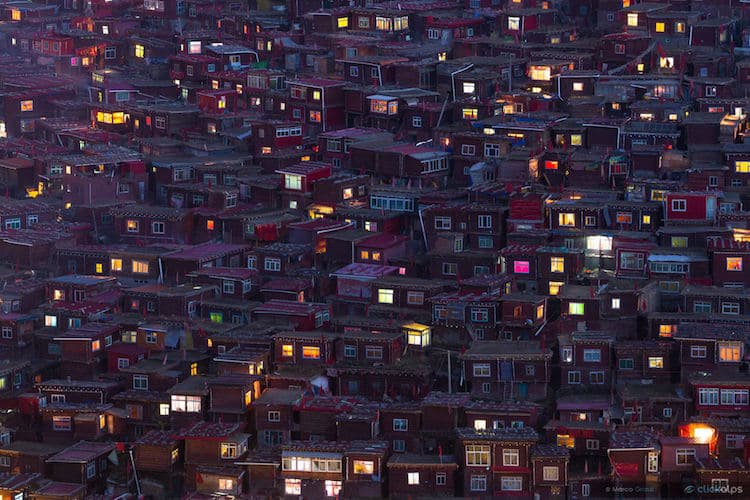
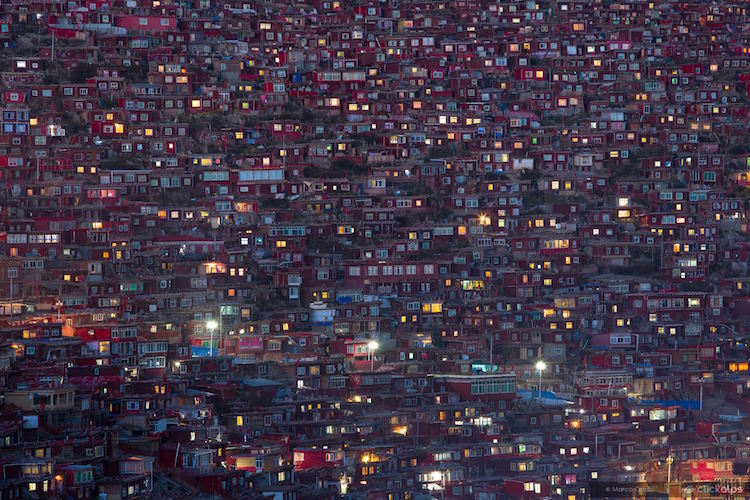
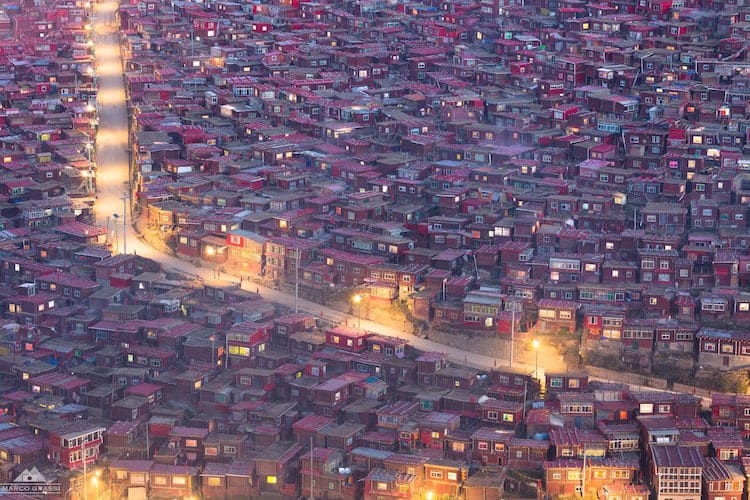 Marco Grassi: Website | Facebook | Instagram | 500px
Marco Grassi: Website | Facebook | Instagram | 500px
Travel To Be Alive Expeditions: Website | Blog | Facebook | Instagram | Twitter
My Modern Met granted permission to use photos by Marco Grassi.
